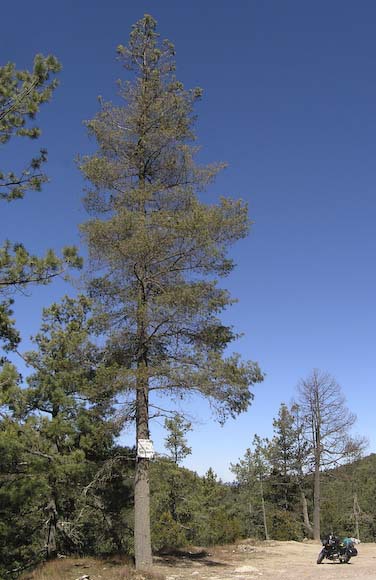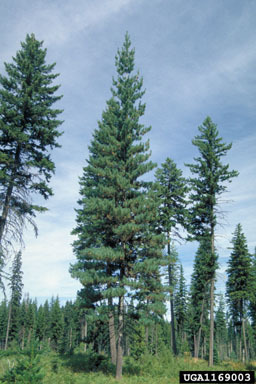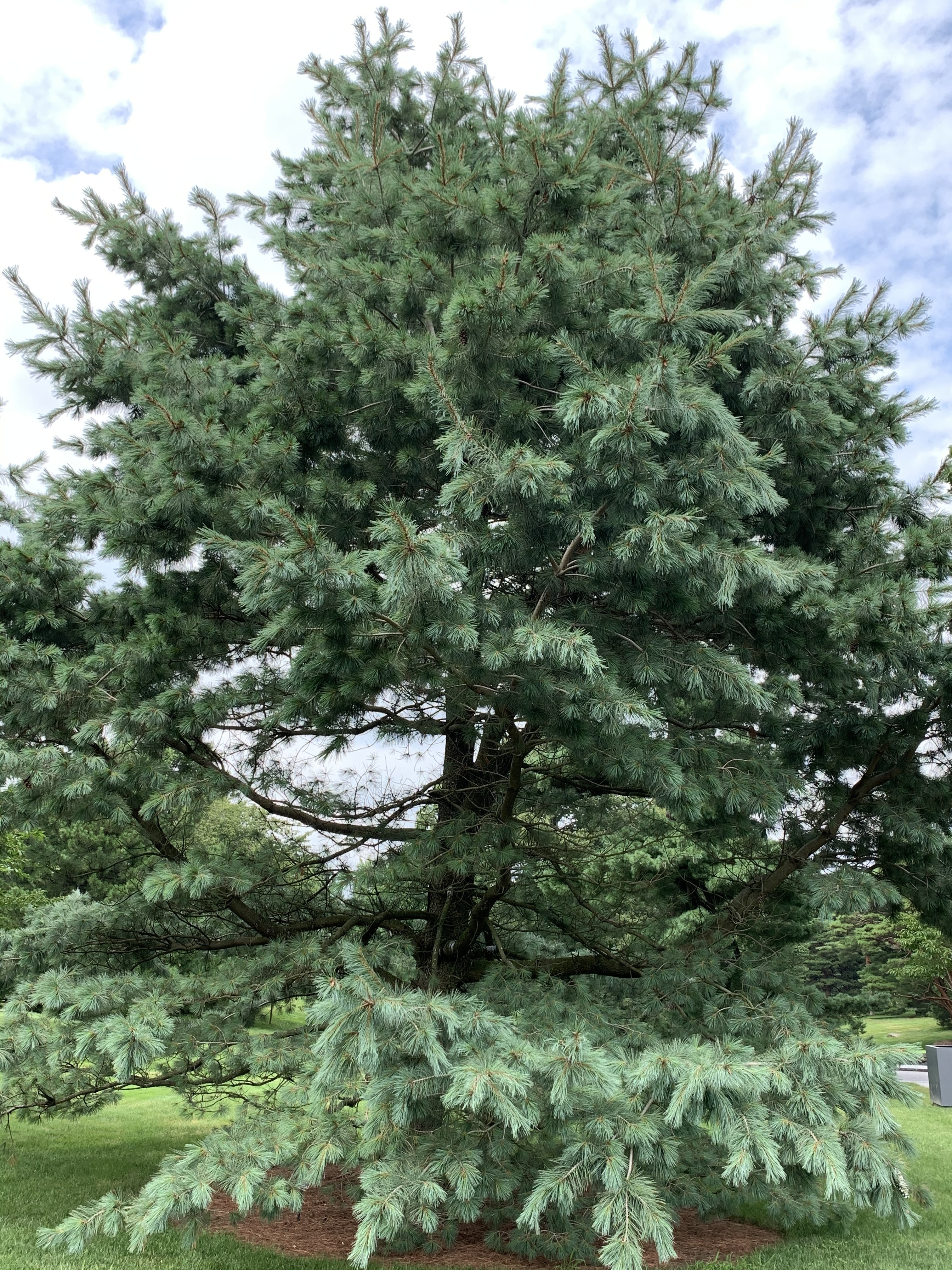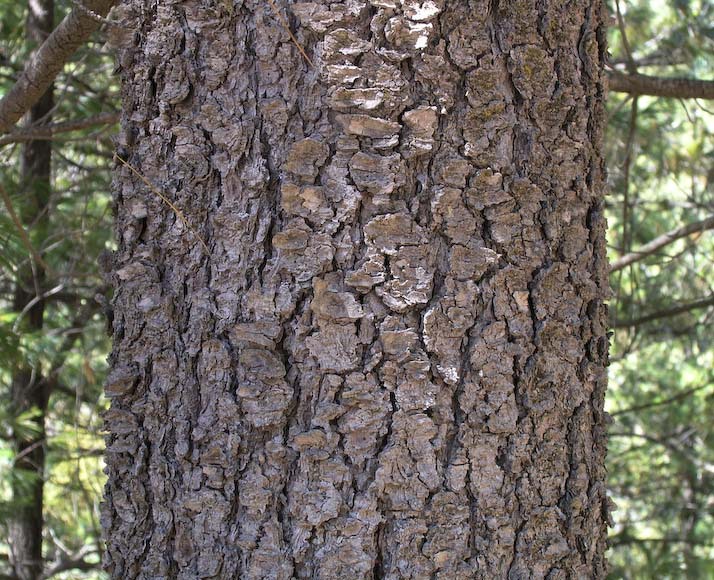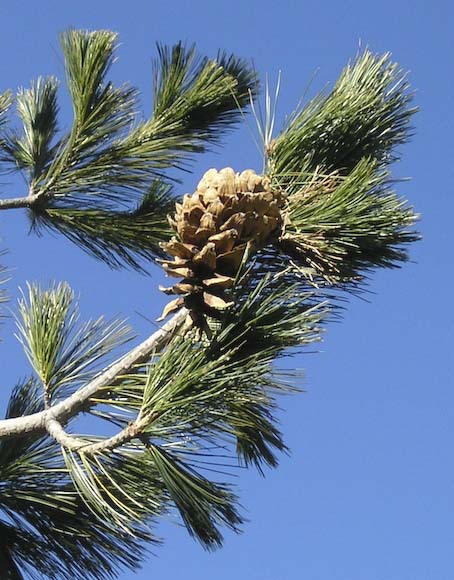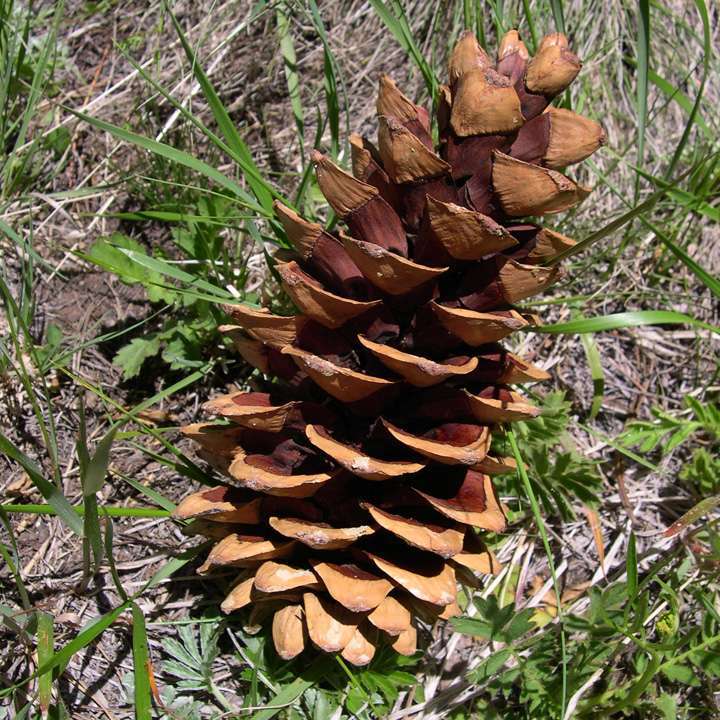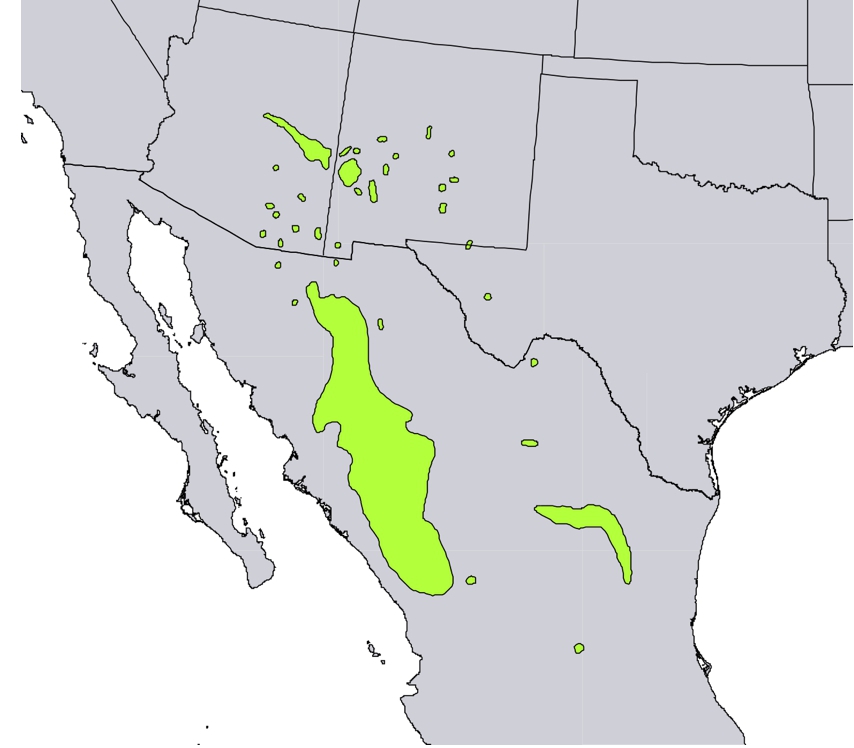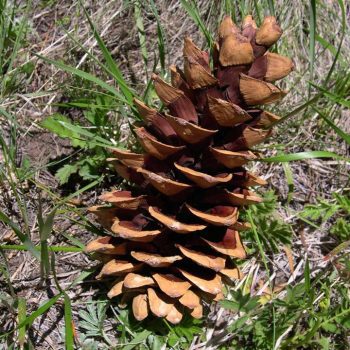
subgenus Strobus (Lemmon), section Quinquefoliae (Duhamel), subsection Strobus (Loudon).
Pinus strobiformis, as described in 1848 by Georg Engelmann (1809-1884), in Memoir of a Tour to Northern Mexico: connected with Col. Doniphan's Expedition in 1846 and 1847, is commonly known as Mexican white pine, Arizona white pine, Chihuahuan white pine, and southwestern white pine; as well as pino blanco, pinabete, and pino enano in the Spanish language. The species name describes this tree's general resemblance all members of subsection Strobus.
Ethnobotany. The seeds were eaten by the indigenous people of the southwestern U.S. It is locally (in Mexico) used for cabinetry, doors and window frames.
Description. Southwestern white pine is an evergreen coniferous species of tree that grows to mature heights of 50 to 80 feet (15 - 24 m) with a slender, straight trunk up to 20 to 36 inches (50 - 90 cm) in diameter, measuring at breast height; and a crown conic, becoming rounded to irregular with age.

Distribution. This species is native to USA - Arizona, New Mexico, and Texas; in Mexico - Chihuahua, Coahuila, Durango, Nuevo León, Sinaloa, Sonora (type subspecies); subsp. veitchii is found in Mexico - Guanajuato, Hidalgo, México, Michoacán, Morelos, Puebla, Querétaro, Tlaxcala, and Veracruz. Populations in the U.S. and northernmost Mexico are of the reflexa type, showing characters intermediate between typical P. strobiformis and P. flexilis. Grows at elevations of 6,500 to 10,000 feet (1,900 - 3,000 m) above sea level. Habitat dry rocky slopes in high mountains, or as a minor component in mixed conifer forests. Within habitat, it mostly grows on moist, cool sites with associates such as P. hartwegii, and P. culminicola.
Hardy to USDA Zone 8 - cold hardiness limit between 10 to 20ºF (-12.1°C to -6.7°C).
